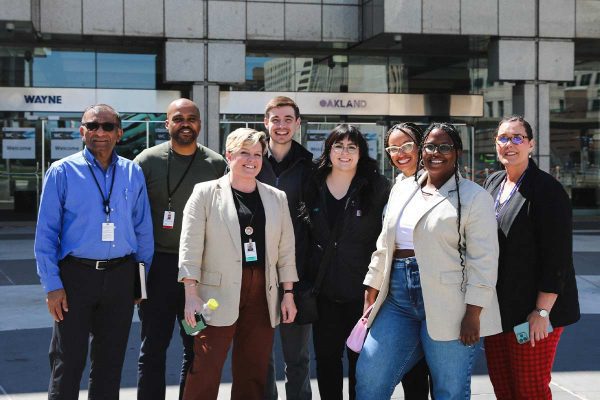Just five years ago, no one would have ever guessed that the websites high school students use to chat and keep up on gossip would be the same websites that event marketers are working with to transform and promote events.
Between Facebook, Twitter and LinkedIn, tradeshow industry professionals have all of the online essentials to create a successful tradeshow. From assisting with registration to updating attendees on the spot, social media is becoming paramount to the events industry.
“Valuable relationships are accomplished through networking, and social media was conceived with the primary intention of making networking more personal yet fast and efficient,” said Linda Musgrove, Tradeshow Teacher and author of The Complete Idiot’s Guide to Tradeshows. “Understanding this is the first step in creating a strong social network of your own.”
Social media is becoming such a big part of the industry that Cvent, a Virginia-based event marketing agency, recently released an eBook titled Event Marketing 2.0. In the eBook, Cvent identifies six steps to social media-tizing the marketing of a show.
recently released an eBook titled Event Marketing 2.0. In the eBook, Cvent identifies six steps to social media-tizing the marketing of a show.
The first step Cvent outlines is identifying the objectives. Marketers should set solid guidelines for the event, both online and offline. These objectives don’t have to tailor specifically to social media websites, but they should be in line with the general desired outcome of the event.
Without clearly defining objectives, companies can invest a lot of time spinning their wheels but never be sure if their efforts paid off.
“As with any element of your marketing effort, create a strategy and understand what you are trying to accomplish so you can measure your results and determine the resources needed to meet the objectives,” said Elena Grant, vice president of marketing for NTP Productions. “The tools change and evolve rapidly so create a flexible strategy that can respond quickly to this change.”
The next guide to integrating social media is defining the target market for the show. Think about who you want to target with your event. Determine the demographics, interests and behaviors of those people and make sure you’re tailoring the campaign to interest them.
The third thing Cvent recommends is listening and monitoring for existing conversations.
Collecting key insights and data from social media networks will help marketers get a better understanding of what content sticks with attendees.
“Allow the information you are supplying to flow directly to your audience instead of your audience searching for the information themselves,” said Musgrove. “Show organizers and exhibitors need to hear what attendees are saying in order to enhance the qualities that are making them great as well as diminish those that are pulling their brand down.”
These steps will all allow the event marketer to determine which social tools and tactics to use. After determining the patterns of followers, social media professionals can then determine which media outlets will work better for the event.
“Each platform can be utilized in different ways to promote events and share marketing information,” said Grant.
The most popular sites to use are LinkedIn, Facebook, Twitter and even YouTube. Marketers can select one o r two and start building a social campaign with the use of online communities.
r two and start building a social campaign with the use of online communities.
“Sites such as Facebook, where a person can ‘Like’ a page and receive updates on a consistent, unobtrusive basis convey an image to the potential client that your company is active, and is therefore immediate and reliable,” said Musgrove.
The next step is to integrate social media throughout the event process. Link all of the social media pages back to the event registration website. This allows registrants the opportunity to more easily join in on the conversation about the event. Also be sure that each social media outlet coincides with the rest of them, making one big web of online conversation.
“Also, incorporate social media elements in your speaker contracts and publication agreements,” said Grant. “Find out who your influencers are, like key bloggers and those with large followings within the audience segments you are trying to reach, and create a plan to incite them to write about your event.”
Finally, Cvent suggests that marketers set goals, which are more specific than objectives. Setting goals means creating measurable benchmarks for the objectives outlined in the first step. This allows you to measure the return on your “social media investment.”
After following these steps and creating a social media strategy, it’s important to get the ball rolling by using the sites best suited to your needs. Leveraging each channel to raise awareness for your event and boost event attendance will create a community-based engagement, something that tradeshows thrive off of.
The first website analyzed by Event Marketing 2.0 is Twitter. Although  Twitter hasn’t been around as long as some of the other social networking sites, it offers an opportunity for live, up-to-the-moment updates and information.
Twitter hasn’t been around as long as some of the other social networking sites, it offers an opportunity for live, up-to-the-moment updates and information.
This allows attendees the opportunity to keep in touch with what is going on before the show, during the show and after the show, all in 140 characters.
The next website is Facebook. Facebook is the social network for making connections. It is a platform for creating and sharing all kinds of information and instigating participation and involvement with the event.
“We developed a ‘Picture It’ contest on Facebook that awarded a free trip to the attendee that uploaded the most photos taken from the show floor on the show’s Facebook page,” said Grant. “The winner uploaded three albums containing a total of 450 photos, which helped us to capture images of the show.”
Creating an event on Facebook is another opportunity to connect to your audience. After you’ve created the event, you can invite target-specific people and even share it on other pages.
Another useful website is LinkedIn. Although LinkedIn is geared more toward industry professionals rather than the general public, so it is a great portal for creating more in-depth conversations.
And like Facebook, users can create a specific event on LinkedIn and share it. You can then post this event to relevant groups and ask that users mark “Attending” when invited. LinkedIn is also a useful tool for associations and corporations looking to push their event to the next level.
Including social media in the marketing of an event genuinely creates interest and awareness, which can translate into a meaningful increase in attendance and participation. However, the best part about integrating social media into an event may be the price tag.
“Social media is a cost-efficient way to increase awareness about your event, offer additional customer service, build a community of people writing about your event, and generate interest onsite,” said Grant. “It’s a great tool to engage your audience, influencers, speakers and exhibitors.”
| Home |
| People on the Move |
| National News |
| International News |
| Opinions |
| Tradeshow Calendar |





























